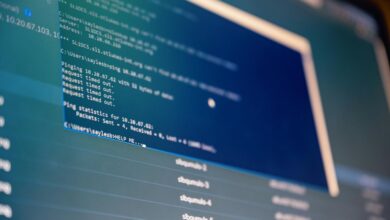Literot Tag: Understanding Digital Content Categorization

Literot Tag represents a significant advancement in the categorization of digital content, particularly within the adult literature sector. This tagging system not only enhances discoverability for users but also aligns content with specific preferences. For both readers and creators, understanding the implications of Literot Tag is crucial. As the landscape of digital content evolves, the strategic use of such categorization could redefine engagement and accessibility. What are the broader implications of this system on the industry?
What Is Literot Tag?
The Literot Tag serves as a pivotal tool in the realm of digital content categorization, specifically within the adult literature genre.
This tagging system provides a clear literot tag definition, enhancing discoverability and user experience.
The Importance of Effective Content Categorization
Effective content categorization is crucial for optimizing user engagement and satisfaction.
By organizing digital assets thoughtfully, organizations can enhance user experience, improve search functionality, and streamline content management processes.
These strategic benefits underscore the need for a systematic approach to categorizing content in today’s digital landscape.
Enhanced User Experience
When content is organized thoughtfully, users are more likely to engage meaningfully with it, enhancing their overall experience. Effective content categorization not only facilitates content discoverability but also supports personalization strategies, catering to individual preferences. This strategic approach allows users to navigate freely and find relevant material, thereby enriching their interactions and fostering deeper connections with the content.
| Category | Examples | Benefits |
|---|---|---|
| Genres | Fiction, Non-Fiction | Tailored recommendations |
| Themes | Adventure, Romance | Enhanced engagement |
| Formats | Articles, Videos | Improved accessibility |
Improved Search Functionality
Enhancing search functionality is a critical component of digital content categorization, as it directly impacts user satisfaction and engagement.
Effective categorization improves search algorithms, facilitating more accurate content discovery. When users can swiftly find relevant material, their autonomy in navigating digital landscapes increases.
This strategic enhancement not only fosters user loyalty but also encourages deeper exploration of content, ultimately benefiting the platform’s overall performance.
Streamlined Content Management
Streamlined content management is fundamentally intertwined with effective content categorization, as the ability to organize and retrieve information efficiently underpins the entire digital ecosystem.
Robust content organization relies on strategic metadata strategies, enabling users to navigate vast digital landscapes with ease. By implementing these practices, organizations empower individuals to access the information they need, thereby fostering a sense of autonomy and enhancing overall productivity.
Benefits of Using Literot Tag for Readers
Utilizing the Literot tag significantly enhances the reading experience by enabling readers to efficiently navigate a diverse array of digital content.
By aligning with reader preferences, the Literot tag facilitates streamlined content discovery, allowing individuals to explore narratives that resonate with their interests.
This method not only fosters engagement but also empowers readers to curate their literary journeys with greater autonomy and satisfaction.
Advantages for Writers and Creators
As writers and creators navigate the complexities of digital content, the Literot tag emerges as a valuable tool for amplifying their reach and effectiveness.
This tagging system fosters creative flexibility, enabling authors to explore diverse genres and themes.
How to Implement Literot Tag in Your Work
The implementation of the Literot tag can significantly enhance a writer’s or creator’s ability to reach targeted audiences and maximize engagement.
By understanding literot tag applications, creators can strategically categorize their content. Adopting best practices, such as keyword optimization and consistent tagging, ensures that materials are easily discoverable.
This approach not only attracts the right audience but also fosters a deeper connection with them.
The Future of Digital Content Tagging
The future of digital content tagging is poised for transformation through the integration of AI-powered tagging systems, which promise enhanced accuracy and efficiency.
Additionally, the standardization of tags will likely play a critical role in improving interoperability across platforms, facilitating better content discovery.
Furthermore, the rise of user-generated content tags could democratize the tagging process, empowering users to contribute to categorization while fostering community engagement.
AI-Powered Tagging Systems
While traditional tagging methods often rely on manual input and predefined categories, AI-powered tagging systems are revolutionizing the way digital content is organized and accessed. By employing semantic analysis and automated tagging, these systems enhance user experience and content discoverability, ultimately fostering a sense of freedom in navigating vast information landscapes.
| Emotion | Impact | Freedom |
|---|---|---|
| Excitement | Enhanced Access | Unrestricted Exploration |
| Frustration | Inefficiency | Limited Choices |
| Satisfaction | Streamlined Search | Empowered Navigation |
| Curiosity | Discover New Content | Infinite Possibilities |
Standardization of Tags
A growing consensus among digital content creators and managers highlights the necessity for standardization in tagging systems to enhance interoperability and efficiency.
By adopting uniform tagging strategies, organizations can achieve greater content consistency, facilitating easier data sharing and discovery.
This strategic approach not only empowers creators but also fosters an environment where digital content can be accessed freely and effectively across various platforms.
User-Generated Content Tags
As digital landscapes evolve, the integration of user-generated content (UGC) tags emerges as a pivotal strategy for enhancing content discoverability and relevance.
By leveraging user feedback, platforms can ensure tag consistency, fostering a more personalized and engaging experience.
This collaborative approach not only empowers users but also enriches the content ecosystem, paving the way for a dynamic and user-centric digital environment.
Conclusion
In the evolving landscape of digital literature, Literot Tag serves as both a compass and a bridge, guiding readers through a vast sea of content while connecting writers to their ideal audience. This duality highlights the essential balance between exploration and engagement, ensuring that users enjoy a tailored experience while creators achieve greater visibility. As the future of digital content tagging unfolds, embracing such systems will be crucial for fostering meaningful connections and enriching the literary journey for all.




